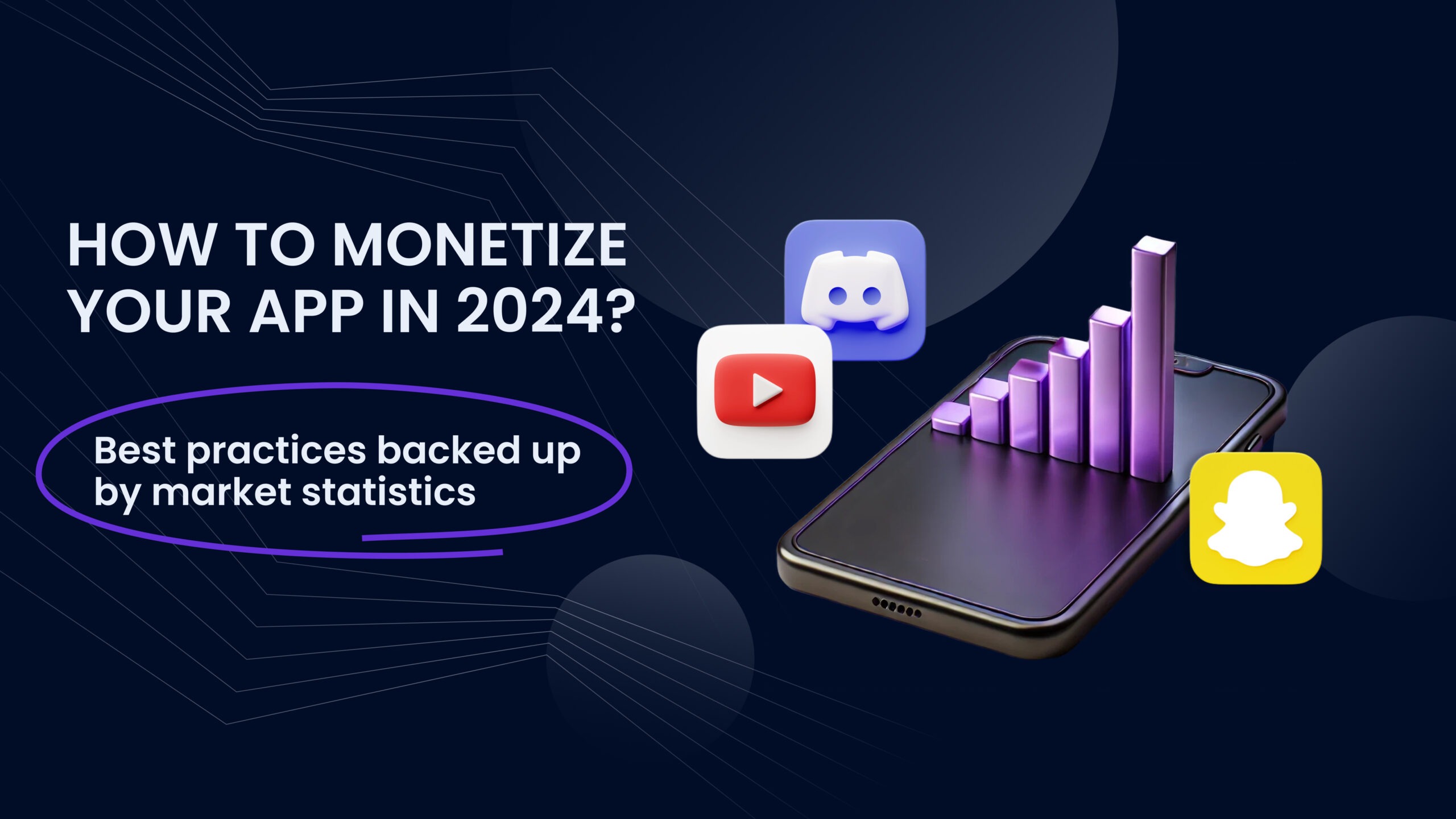
The mobile app market went through ups and downs but has recovered. Spending fell a little in 2022 but rose again in 2023 to $171 billion, according to Statista. This growth is not just about money—people are using apps more. The average amount users pay for apps went back above $5, and overall app use keeps increasing. This shows the market is becoming more stable, making it a great time to find your monetize app strategies.
Content:
- The current state of the mobile app market
- What has changed in app monetization in 2024?
- How to monetize an app with ads?
- How much money can you make with every monetization strategy?
- App monetization: How to get started on Android and iOS
Mobile apps are becoming a valuable service, and people are happy to pay for the features they use most. In 2023, users spent $171 on apps globally, with China and the US leading the spending ranking.
The current state of the mobile app market
One trend that’s going strong? Short-form video! Apps like TikTok continue to dominate, and even platforms like Instagram and YouTube are jumping on the bandwagon with features like Reels and Shorts. By 2025, experts predict that video will take up over 60% of our social media time. While the breakneck growth of TikTok’s early days might slow down, expect YouTube Shorts to keep the competition fierce.
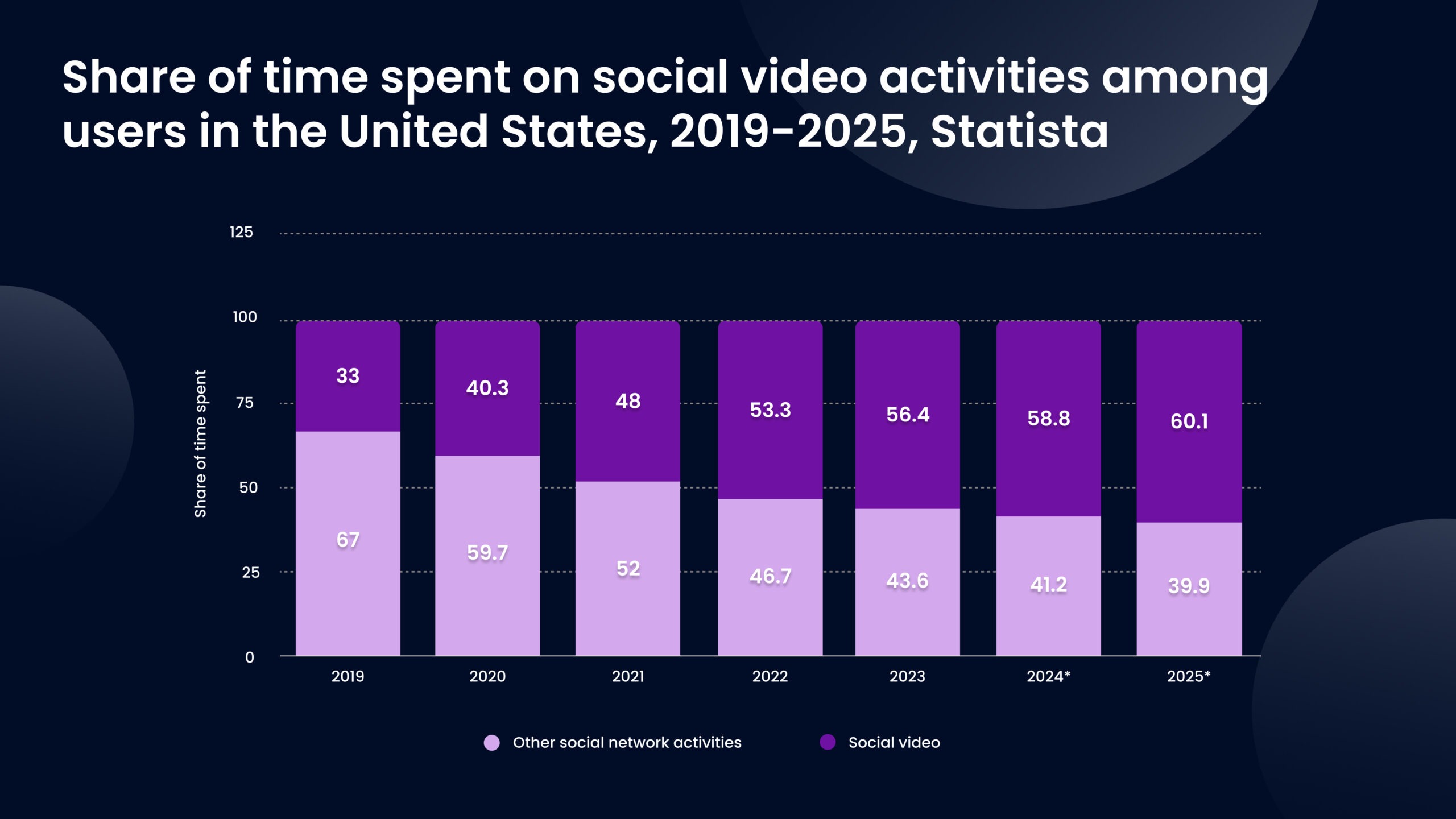
Remember the Twitter takeover in 2022? Well, it sparked a microblogging boom! Decentralized platforms like Mastodon saw a surge in users, and Meta even launched its own microblogging app called Threads. Threads had a brief moment of fame, reaching 44 million daily users in July 2023, but its popularity fizzled out by year’s end.
But that’s not it! Revenue across all 21 mobile app segments is projected to surge, which means that every single segment is expected to see significant growth. The Games segment stands out as a particular powerhouse, reaching a peak value of $249.9 billion US dollars.
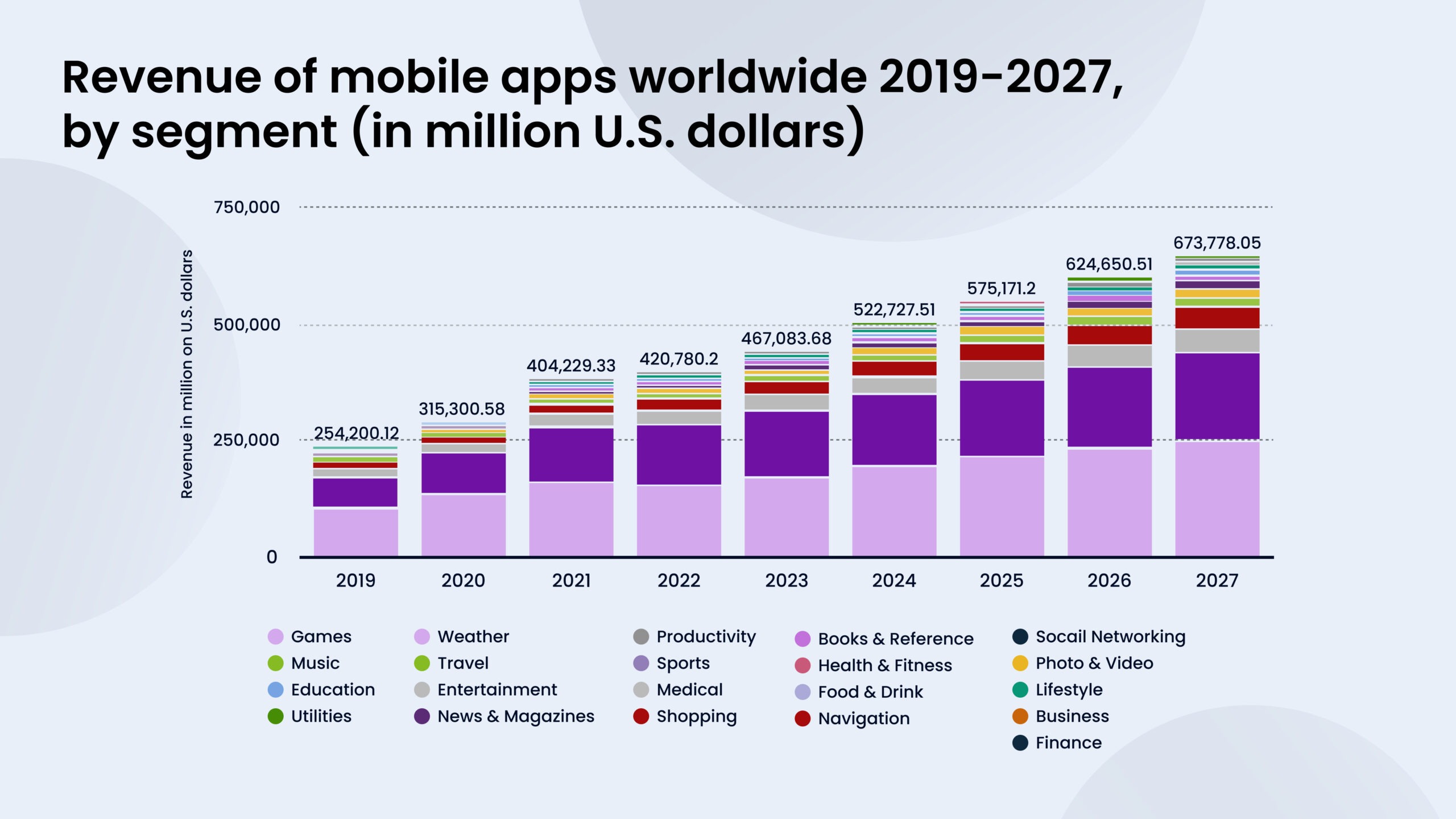
What has changed in app monetization in 2024?
But first, what is app monetization? App monetization is the process by which app developers generate revenue from their creations. In the early days (pre-2010s), paid downloads were the primary model. However, the modern app market relies heavily on in-app purchases, subscriptions, and in-app advertising.
So, what’s changed in 2024? Consumers are ditching the “pay once, use forever” model and embracing subscriptions and in-app purchases. This shift is partly due to tighter privacy settings that make in-app advertising less effective.
Subscription services are booming! For app creators, this model is a win-win. It keeps users engaged and steers spending directly to their platform, bypassing app store fees.
But what makes users stick around? Apps convenience! Apps that simplify life for Gen Z (27%) and save time for Gen X (28%) are the ones that get downloaded and kept. As users discover the value of mobile apps, from fitness trackers to streaming services, in-app purchases and subscriptions will become even more popular ways for app creators to generate revenue.
Subscriptions and in-app purchases are gaining ground, but for now, in-app advertising remains the key monetization strategy. As of March 2024, a third of app makers globally rely on ads, compared to a much smaller 10% who use in-app billing. In 2023 alone, ads raked in $307 billion – the biggest chunk of the app market pie.
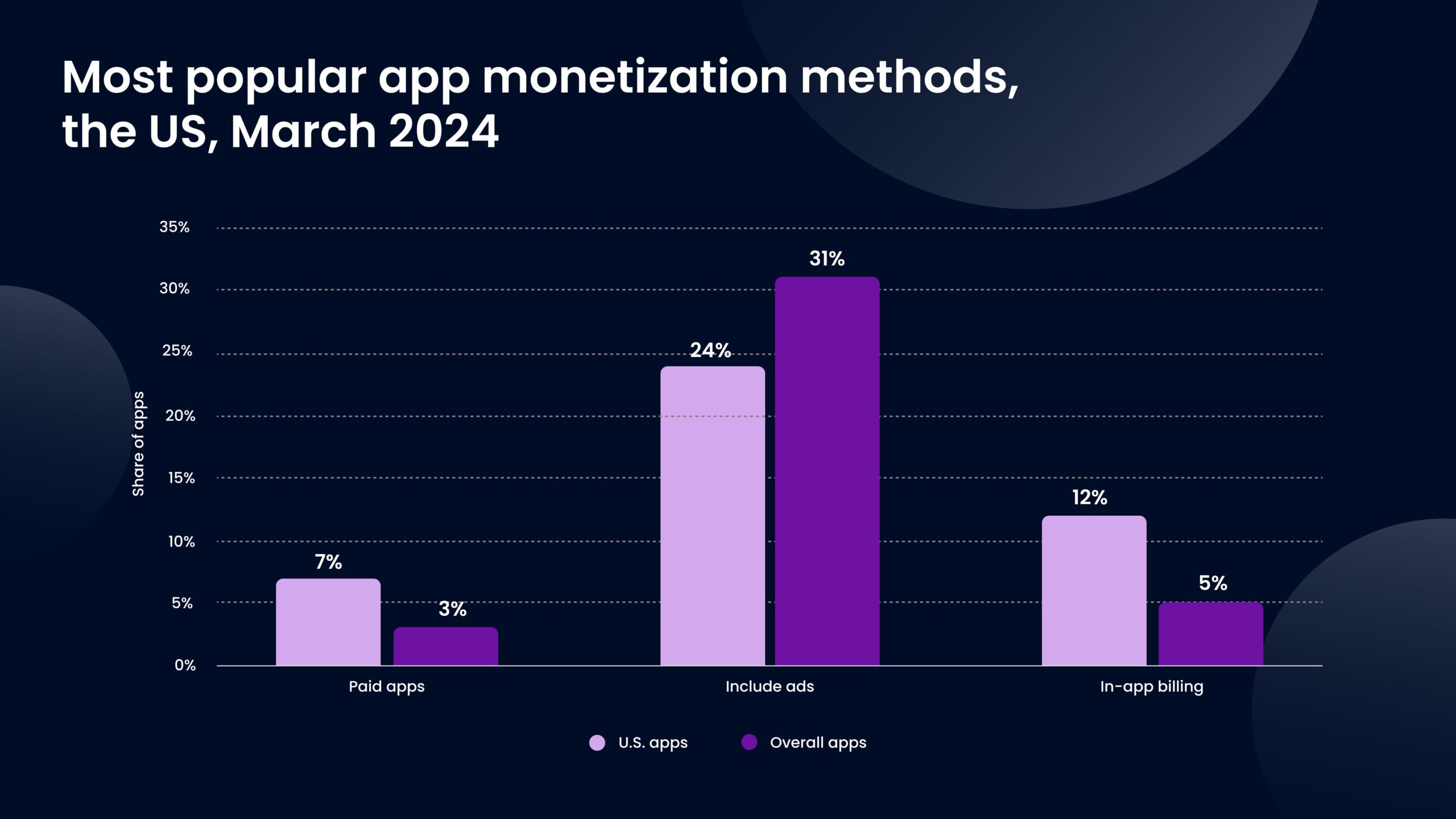
How to monetize an app with ads?
In-app advertising remains a powerful way to generate revenue for free apps, but recent privacy regulations have made hyper-targeted, personalized ads a thing of the past. Here are some tips on how to work within the new legislation and still succeed with ad monetization.
1. Contextual targeting
Focus on relevant ads. Instead of relying on personal data, target ads based on the context of your app. For example, if it’s a fitness app, display ads for workout gear or healthy snacks.
Leverage user behavior. Observe user actions within your app and use that anonymized data to show relevant ads. Someone browsing the travel section might see ads for airlines or hotels.
Partner with relevant brands. Collaborate with brands that align with your app’s theme and target audience. This creates a more natural ad experience and potentially higher engagement.
2. Prioritize user experience
Choose ad formats that don’t disrupt user flow. Consider native ads that blend seamlessly with your app’s design or short, non-skippable video ads rewarded with in-app benefits.
Prioritize transparency and control. Offer users clear options to opt out of targeted advertising and explain how their data is used. Building trust is key to user retention.
Limit the number of times a user sees the same ad. Excessive repetition becomes annoying and counterproductive.
3. Diversify your ad network
Don’t rely on a single provider. Integrate with several reputable ad networks like Google AdMob, Unity Ads, or AppLovin MAX. This allows you to compare performance and optimize ad placements.
Utilize mediation platforms offered by ad networks. These platforms manage and optimize ad delivery from different networks, ensuring you get the best possible ad fill rate and revenue.
4. Focus on user engagement
The core of your strategy should be a valuable and engaging app. Users who find your app useful are more likely to tolerate ads or even consider in-app purchases.
Monitor user behavior and ad performance metrics. See which ad formats perform best and where in your app they generate the most clicks or impressions.
Test different ad placements, formats, and networks to see what resonates best with your audience. Continuously refine your approach based on data.
5. Reward videos
Offer users in-app rewards like virtual currency or bonus levels for watching short video ads. This incentivizes ad engagement and provides additional value to users.
A successful in-app advertising strategy requires a shift from user-specific targeting to contextual relevance, user experience optimization, and data-driven optimization. You can still achieve sustainable revenue from in-app ads by providing value and respecting user privacy.
How much money can you make with every monetization strategy?
Your profit will drastically depend on your app category, target audience, app quality, and monetization strategy. Games, entertainment apps, and productivity tools tend to generate higher revenue compared to utility apps. Obviously, a well-designed, engaging app with a loyal user base is more likely to be profitable, while effective pricing models, ad placement, and subscription plans all contribute to revenue. Here’s a breakdown of some general trends.
- In-app purchases (IAP). Revenue varies greatly. Simple apps might generate a few cents per IAP, while complex games with desirable virtual items can see IAPs priced at several dollars each. Some popular games have even reached millions in revenue per day from IAPs.
- Subscriptions. Subscription fees can range from a few dollars per month to premium services priced at $10 or more. The key is to offer valuable features or content that users are willing to pay for on a recurring basis.
- In-app advertising. Earnings depend on ad format, user engagement, and click-through rates (CTRs). Typically, revenue falls within the range of $0.01 to $0.10 per ad impression, with video ads potentially generating more.
App monetization: How to get started on Android and iOS
So you’ve built a fantastic app – congratulations! Now, it’s time to turn that creation into a revenue stream. This guide will walk you through the steps for getting started with app monetization on both Android (via Google Play Store) and iOS (via Apple App Store).
Step 1: Choose your monetization strategy
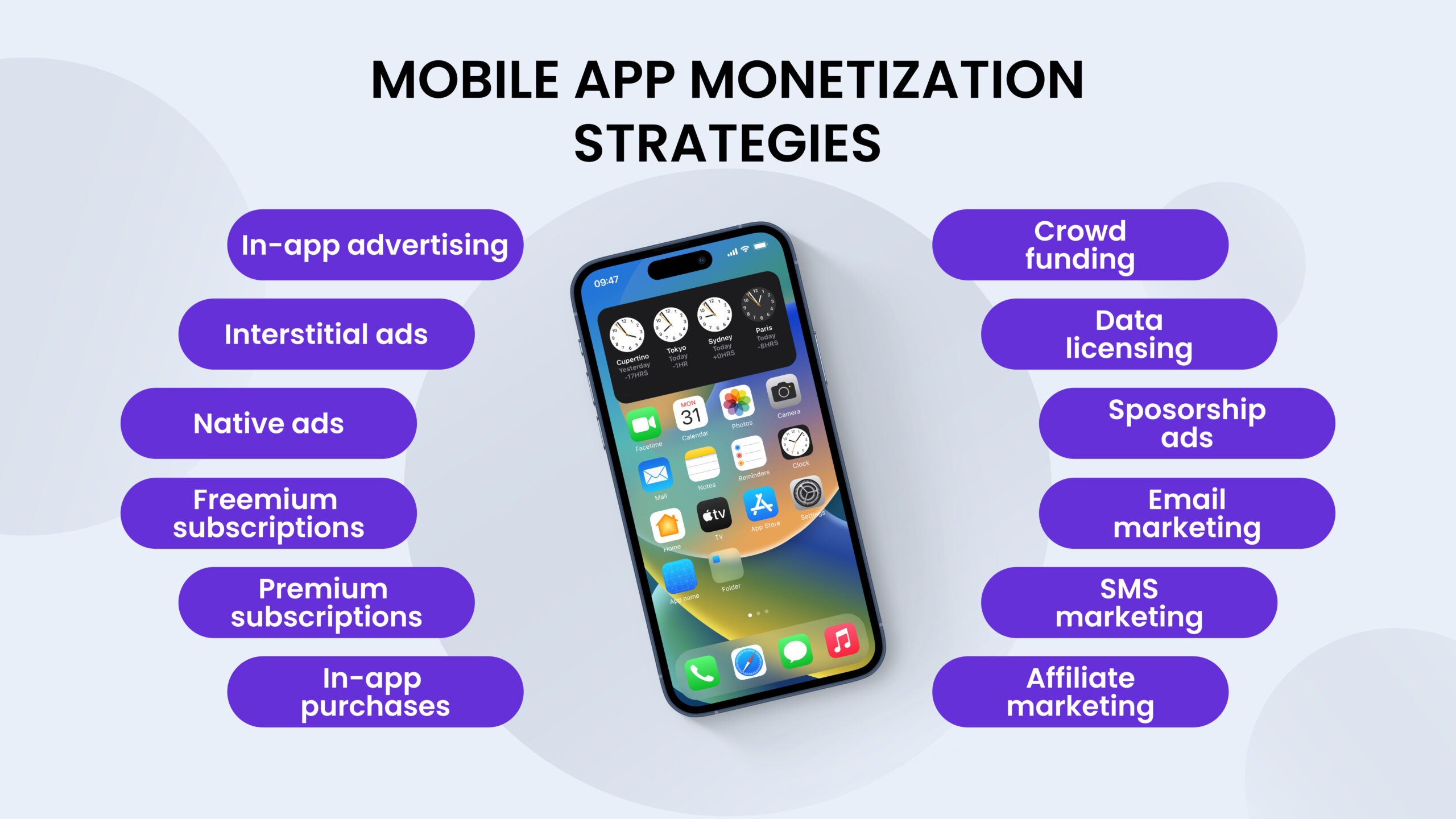
There are several ways to generate revenue from your app. And even though in-app purchases, subscriptions, and in-app advertising are the most popular ones, let’s mention the others:
- Crowdfunding. Apps raise money upfront from a large pool of backers, often offering rewards or early access in return.
- Data licensing. Sell anonymized user data (with consent) to companies for market research or targeted advertising.
- Sponsorship ads. Partner with brands to display their logo or messaging within your app.
- Email/SMS marketing. Promote in-app purchases, subscriptions, or new features directly to your user base.
- Affiliate marketing. Earn commissions by promoting other companies’ products or services within your app.
- Native ads. Ads that blend seamlessly with the design of your app, offering a less disruptive user experience.
- Interstitial ads. Full-screen ads displayed between app screens or levels, often requiring user interaction to close.
You can always combine them to diversify your profit.
Some specifics of games monetization.
Another approach to monetizing your app (games, usually) is based on the FOMO effect (fear of missing out). One of the great examples of the recent days that uses this approach is Hamster Kombat. These are four app monetization models that incentivize user engagement through earning opportunities.
1. Play-to-Earn (P2E). By playing the game, users earn in-game cryptocurrency or tokens. These tokens can be used for various purposes within the game’s ecosystem or converted to real-world currencies through exchanges.
For example, the Axie Infinity game allows players to breed, battle, and trade collectible creatures (Axies) to earn Smooth Love Potion (SLP) tokens, which can be used in-game or sold on cryptocurrency exchanges.
2. Tap-to-earn or click-to-earn. Users earn small rewards, often in-game currency or points, for performing simple actions within the app. These actions could be tapping buttons, watching ads, or completing short tasks.
One great example is The Coin Master. Players collect resources by tapping on objects or completing mini-games. These resources can be used to build their village or attack other players.
3. Earn-by-engagement. This broader category encompasses various ways users can earn rewards through engagement, not limited to playing or clicking. This could involve watching videos, completing surveys, participating in social activities within the app, or even generating content.
4. Micro-transactions. Users purchase small amounts of in-app currency to unlock additional features, items, or functionalities within the app. A great example is the Candy Crush Saga, where players can purchase extra lives, boosters, or additional moves to help them progress through levels.
Step 2: Set up your app store account (Android and iOS)
Google Play Store. Enroll in the Google Play Developer Program (one-time fee) and create a developer account.
Apple App Store. Enroll in the Apple Developer Program (annual fee) and create a developer account.
For years, the mobile world has been a two-horse race between iOS and Android. While Apple’s iOS may be a financial powerhouse, Android holds the popularity crown. Mainly because it comes pre-installed on a wider range of budget-friendly devices. The debate over which platform reigns supreme continues, but one thing’s clear: Android has been the dominant force for the past eight years. By early 2024, 71% of smartphones worldwide were running on Android.
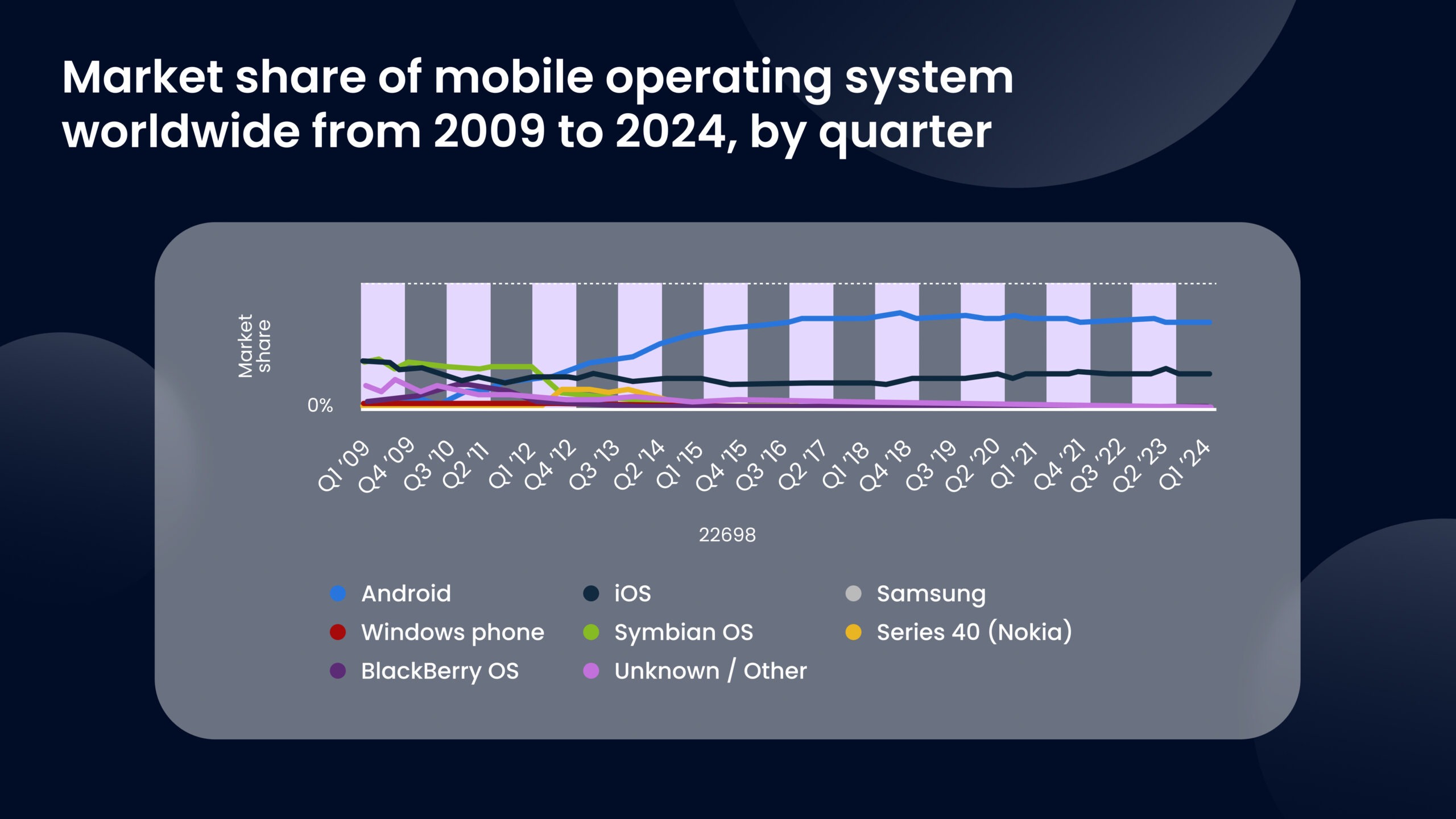
Step 3: Configure monetization settings
Google Play Store. In the Play Console, navigate to the “Monetization” section of your app dashboard. Enable in-app purchases (IAP) or subscriptions if chosen. Define your pricing strategy and set up product listings for IAPs.
Apple App Store. In App Store Connect, locate the “Prices and Availability” section for your app. Enable in-app purchases (IAP) or subscriptions if chosen. Set your pricing tiers and product details for IAPs.
Step 4: Choose your monetization partners
While not mandatory, partnering with ad networks or subscription platforms can simplify monetization. Dozens of app monetization companies offering high-quality service and unique value can help you find custom app monetization strategies. Here are some of the most popular options.

- Apple App Store. Dominant platform for iOS app distribution, offering secure in-app purchases and subscriptions with a large user base. (For iOS apps only)
- Google Play Store. Leading platform for Android app distribution, offering in-app purchases, subscriptions, and ad monetization solutions with a vast user reach. (For Android apps only)
- Unity Ads. In-app advertising platform with a focus on game developers, offering high-quality video ads and strong developer support.
- AppLovin MAX. Comprehensive app monetization platform with mediation technology, offering in-app advertising, in-app purchases, and user acquisition tools.
- IronSource. Global app monetization platform providing in-app advertising (including video and rewarded ads), mediation services, and user acquisition solutions.
- Facebook Audience Network (FAN). In-app advertising network leveraging Facebook’s vast user data for targeted ad delivery (although targeting may be limited due to privacy regulations).
- AdMob by Google. Free and widely used in-app advertising platform offering various ad formats (banners, interstitials, native ads) and integration with Google Analytics.
- InMobi. Global mobile advertising platform focusing on emerging markets, offering in-app advertising solutions and programmatic buying options.
- Vungle. In-app advertising platform specializing in video ads, known for high engagement rates and strong user acquisition capabilities.
Step 5: Optimize for User Experience
Remember, a good user experience is key to successful monetization. Don’t overload your app with ads or make it difficult to access free features. Strive for a balance that keeps users engaged and happy to pay for additional value.
Step 6: Track, analyze, and adapt
Monitor your chosen monetization strategy’s performance. Analyze user behavior and adjust your approach based on data. Tools like Google Play Developer Console or App Store Connect offer valuable insights.
Follow these steps and continuously refine your approach to monetize your app on both Android and iOS and turn your creation into a successful business. Remember that a successful app monetization strategy requires experimentation and adaptation. So get started, track your results, and keep optimizing for maximum success!
Content
- 1 The current state of the mobile app market
- 2 What has changed in app monetization in 2024?
- 3 How to monetize an app with ads?
- 4 How much money can you make with every monetization strategy?
- 5 App monetization: How to get started on Android and iOS

